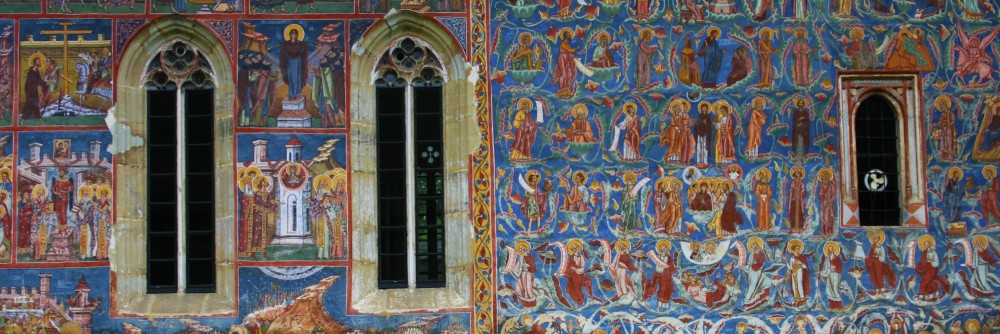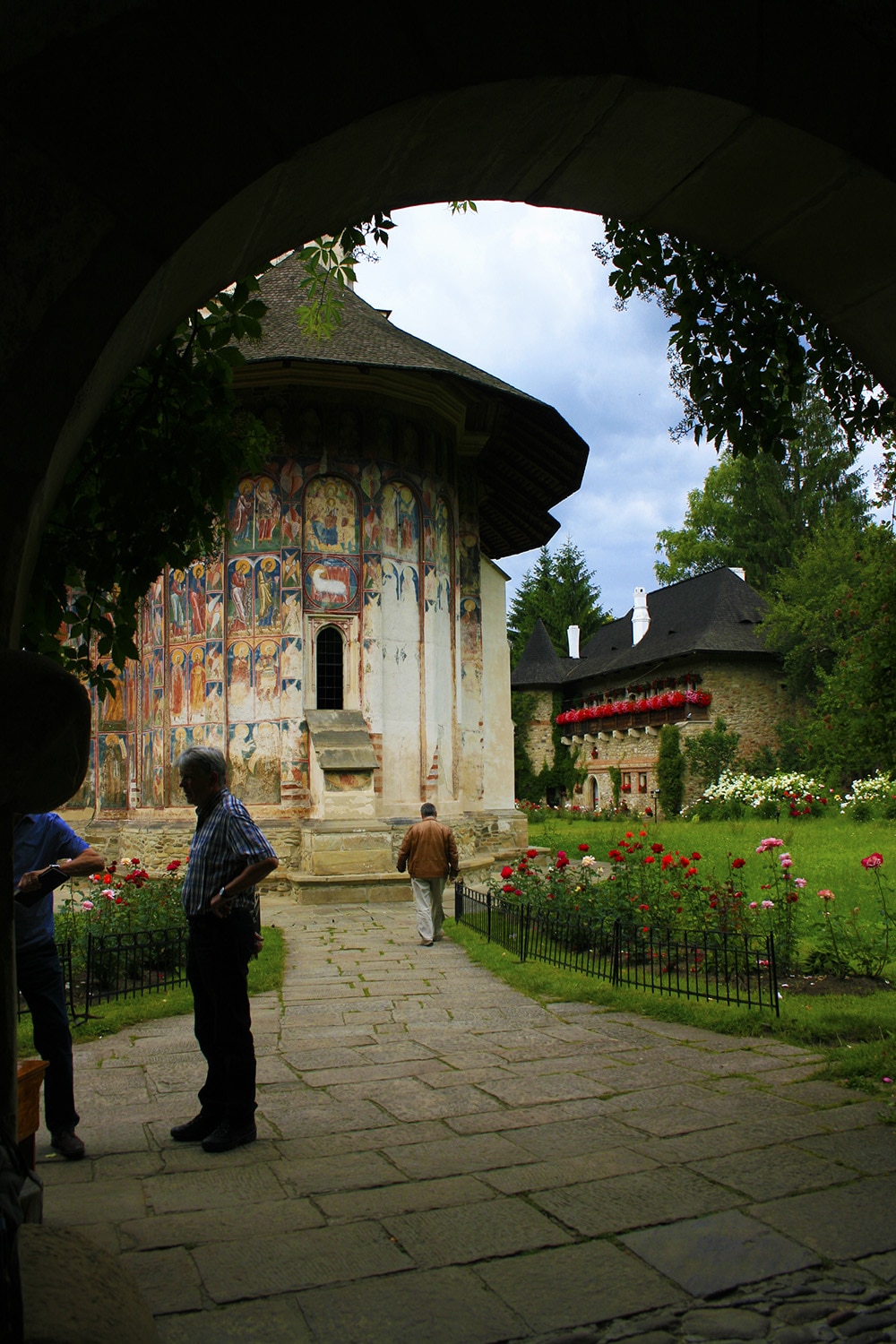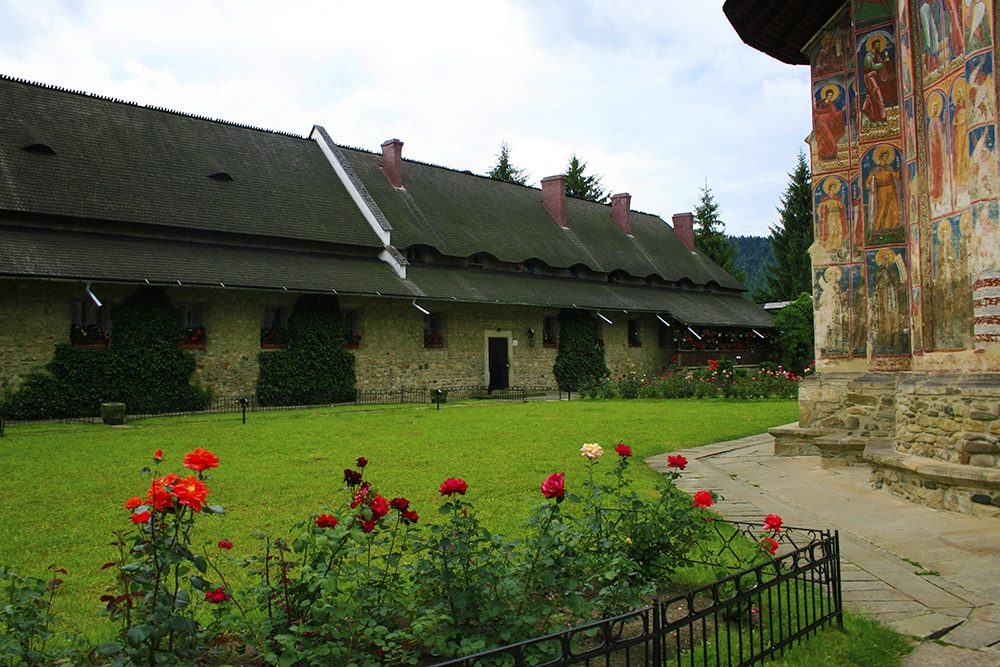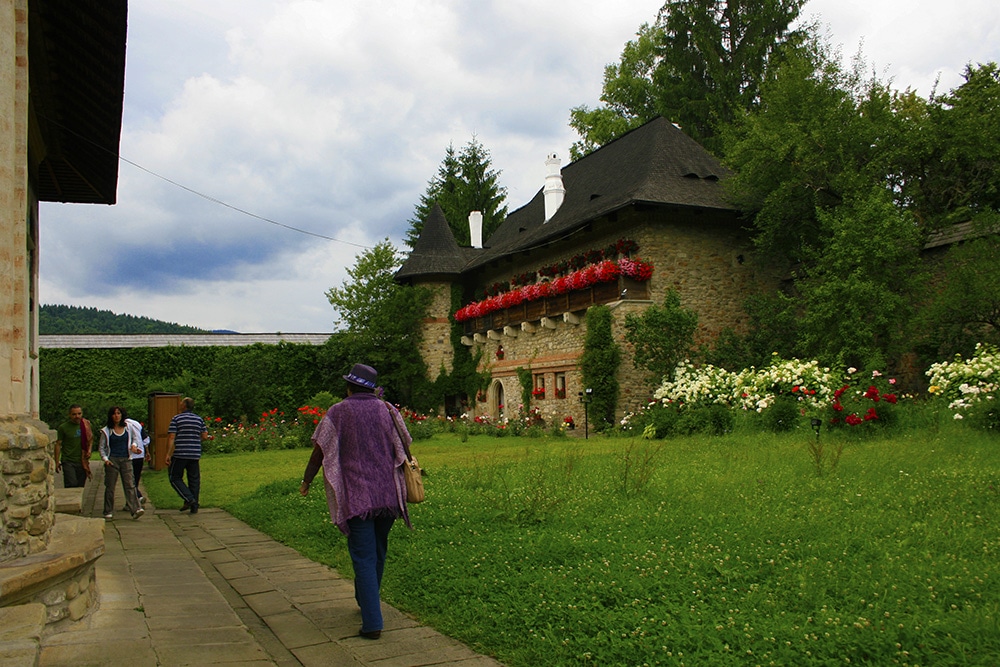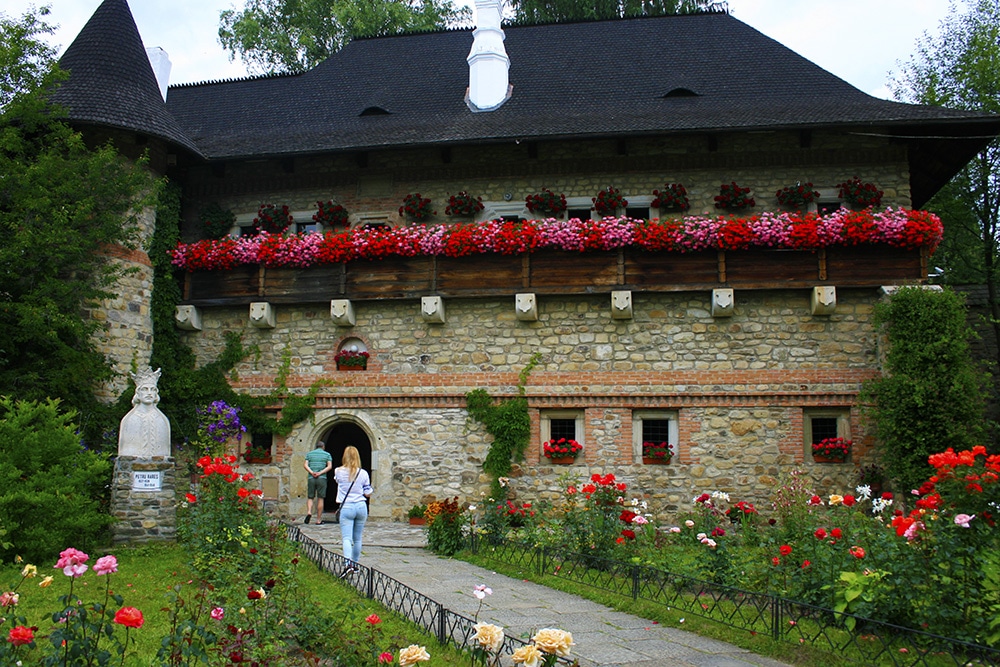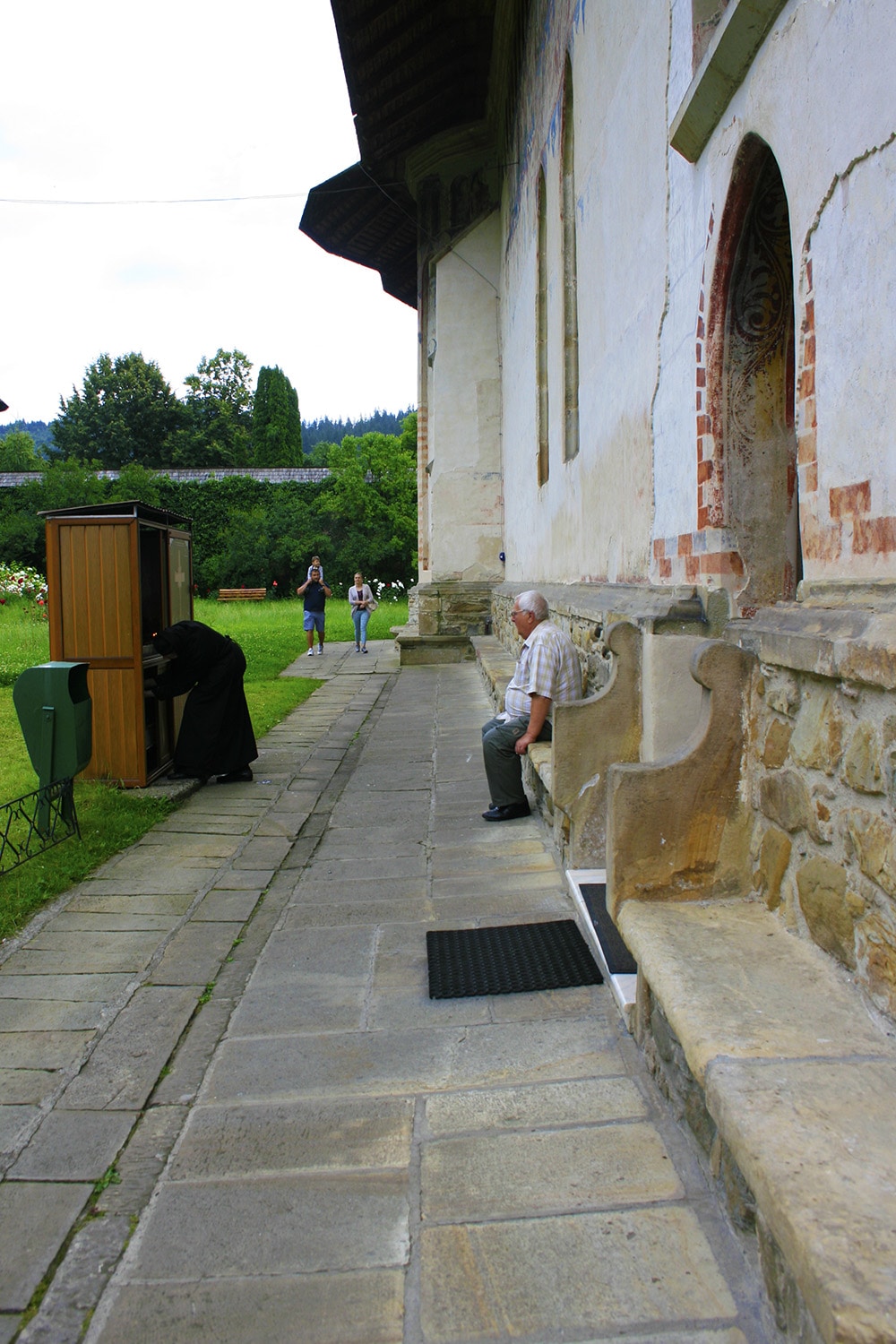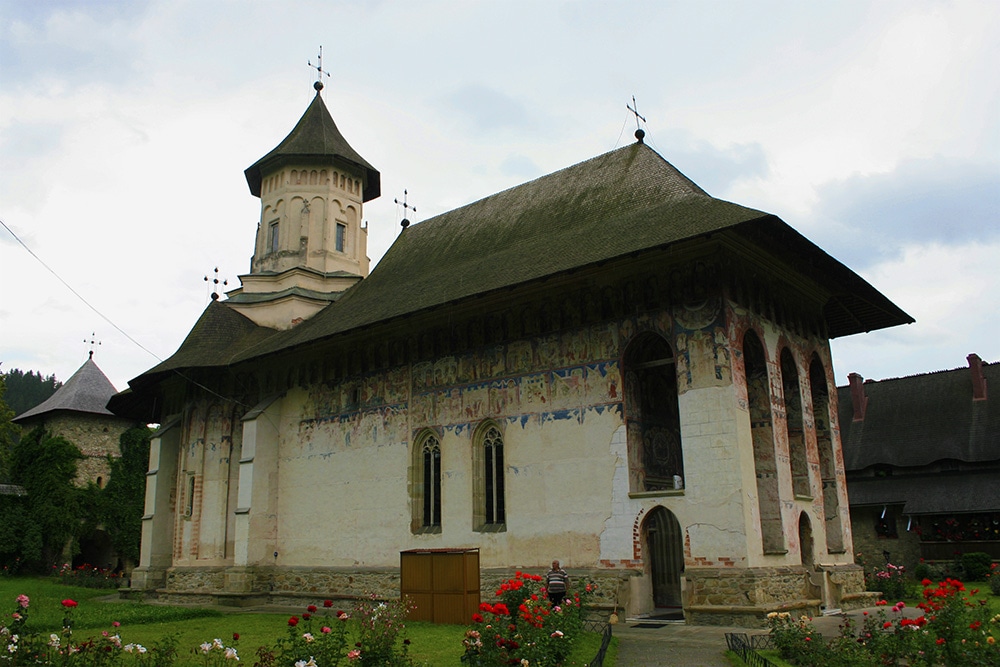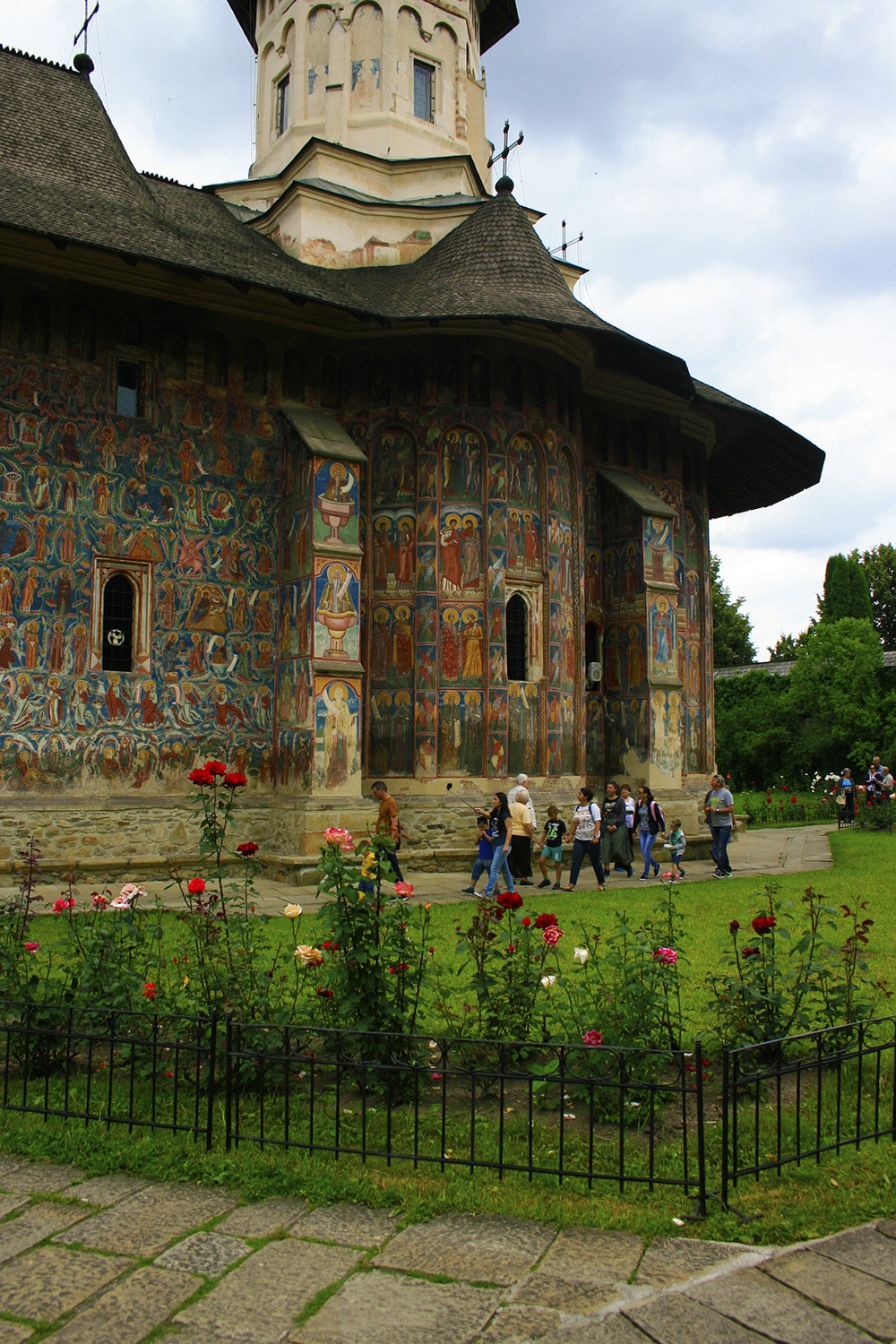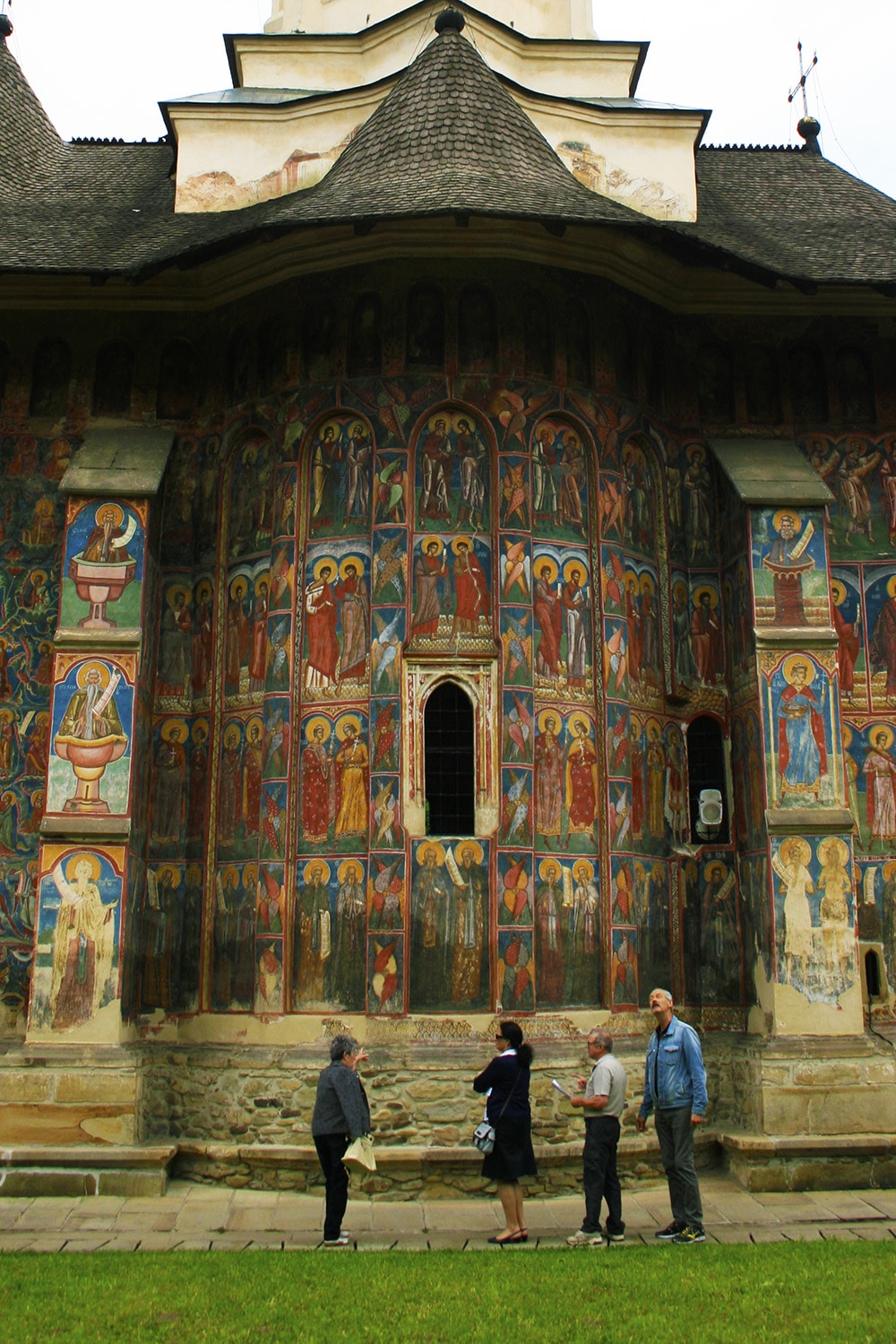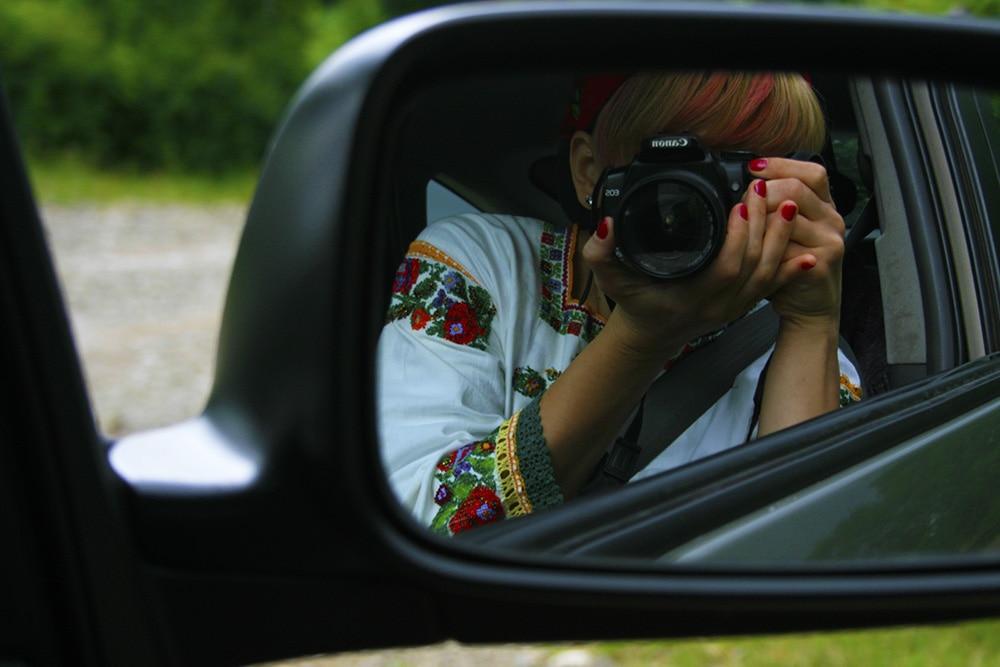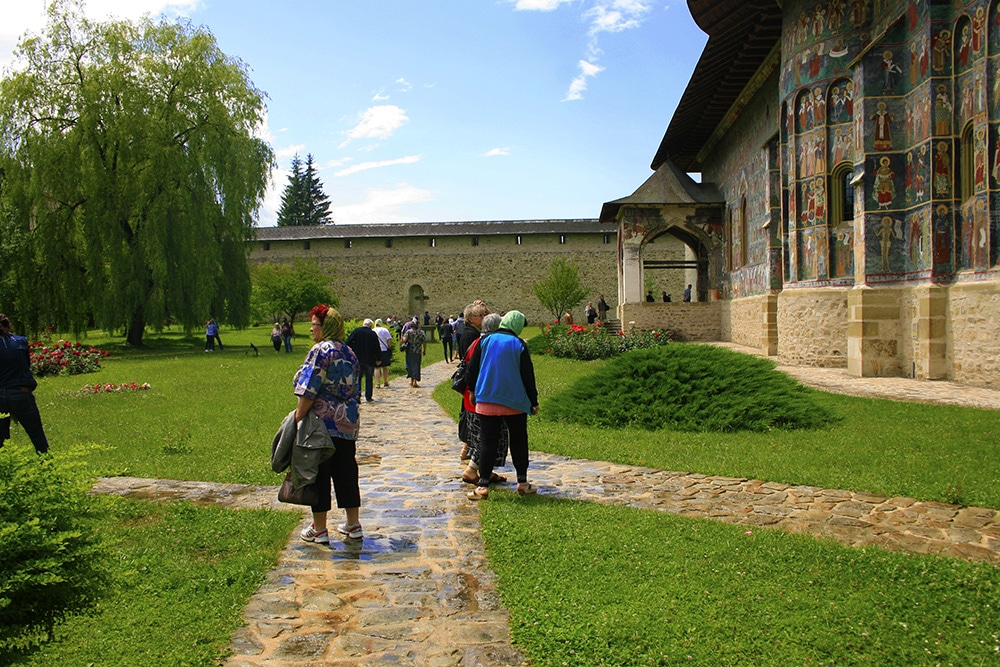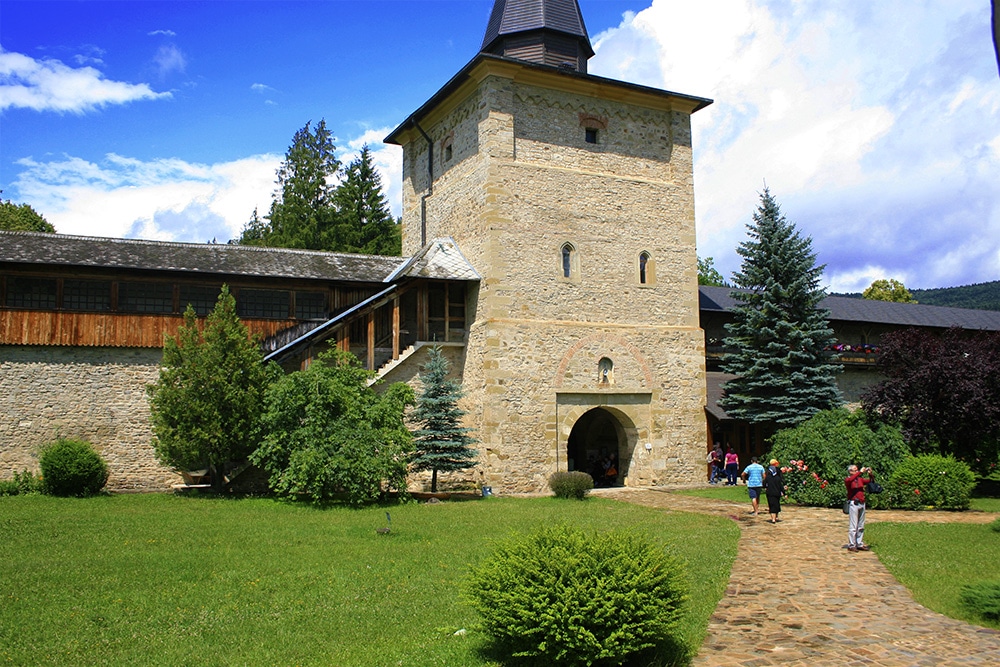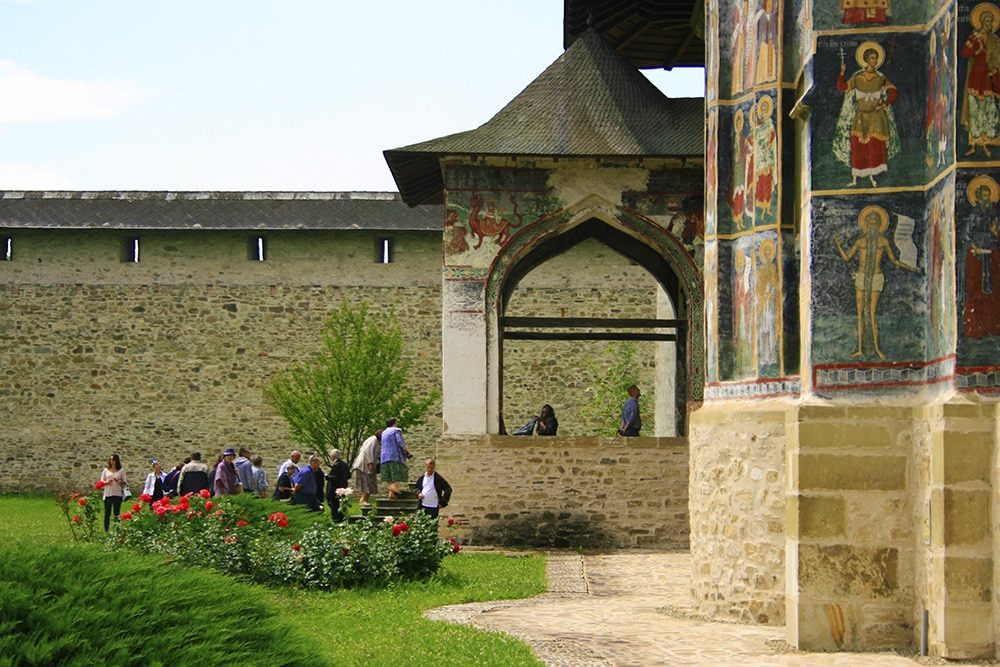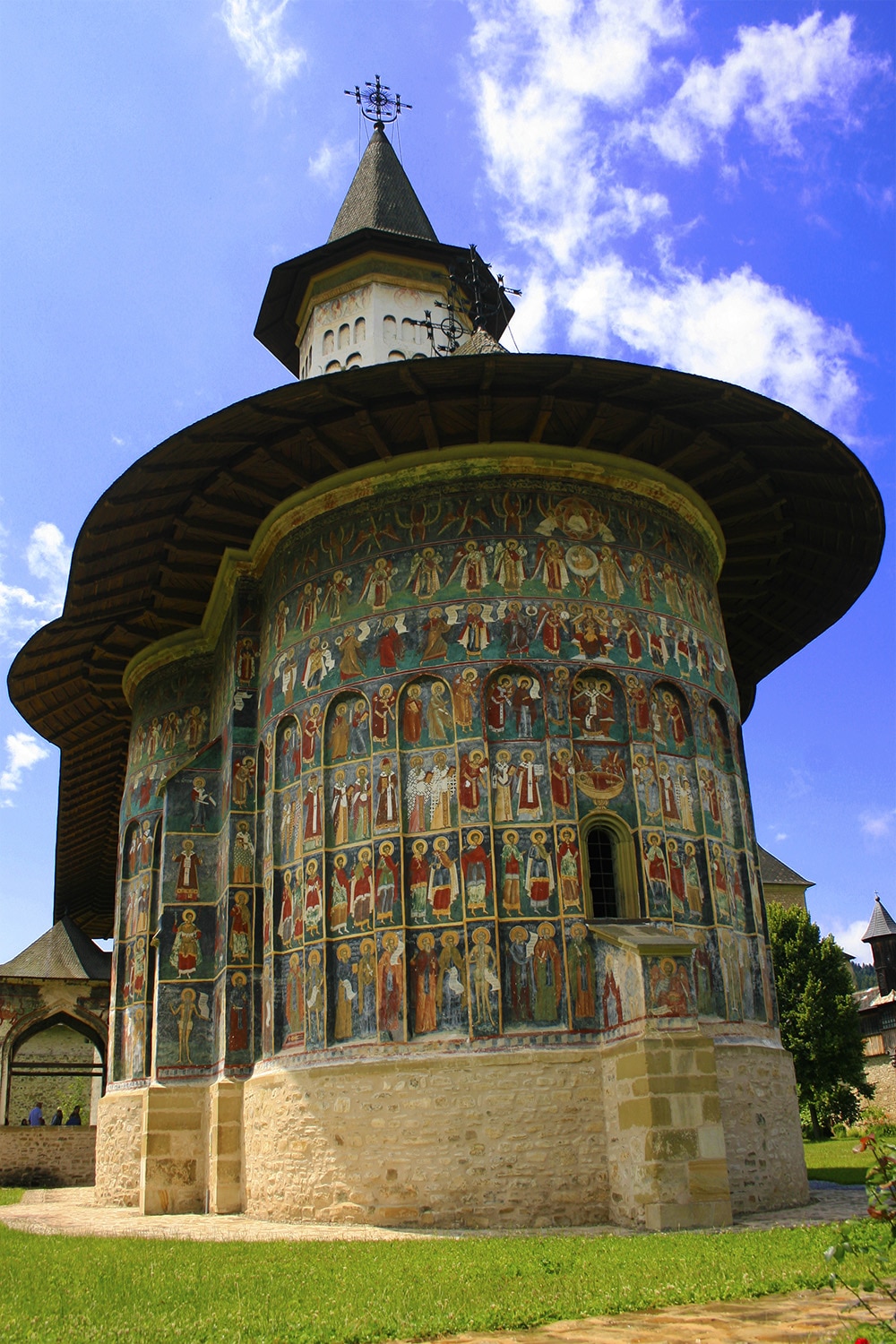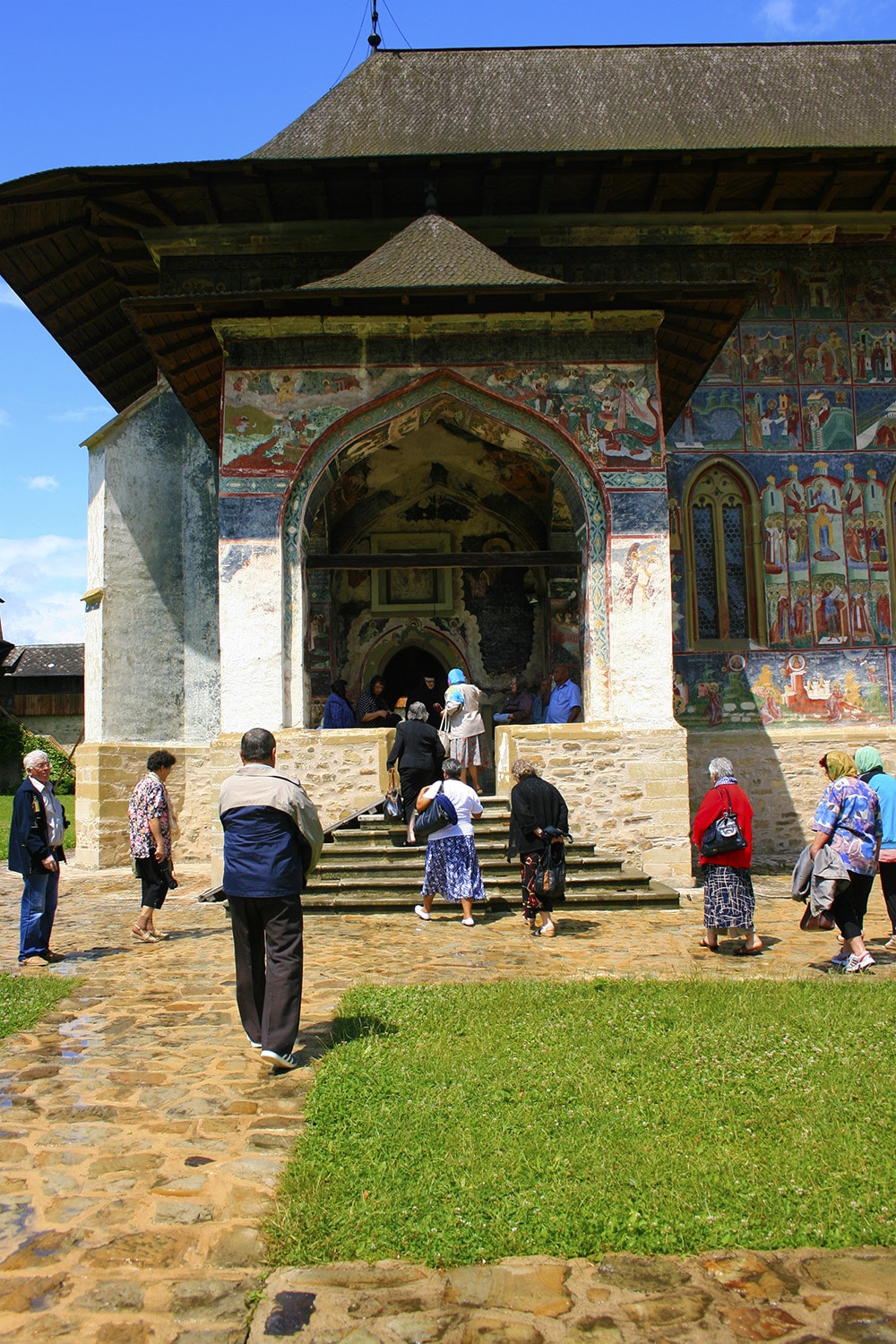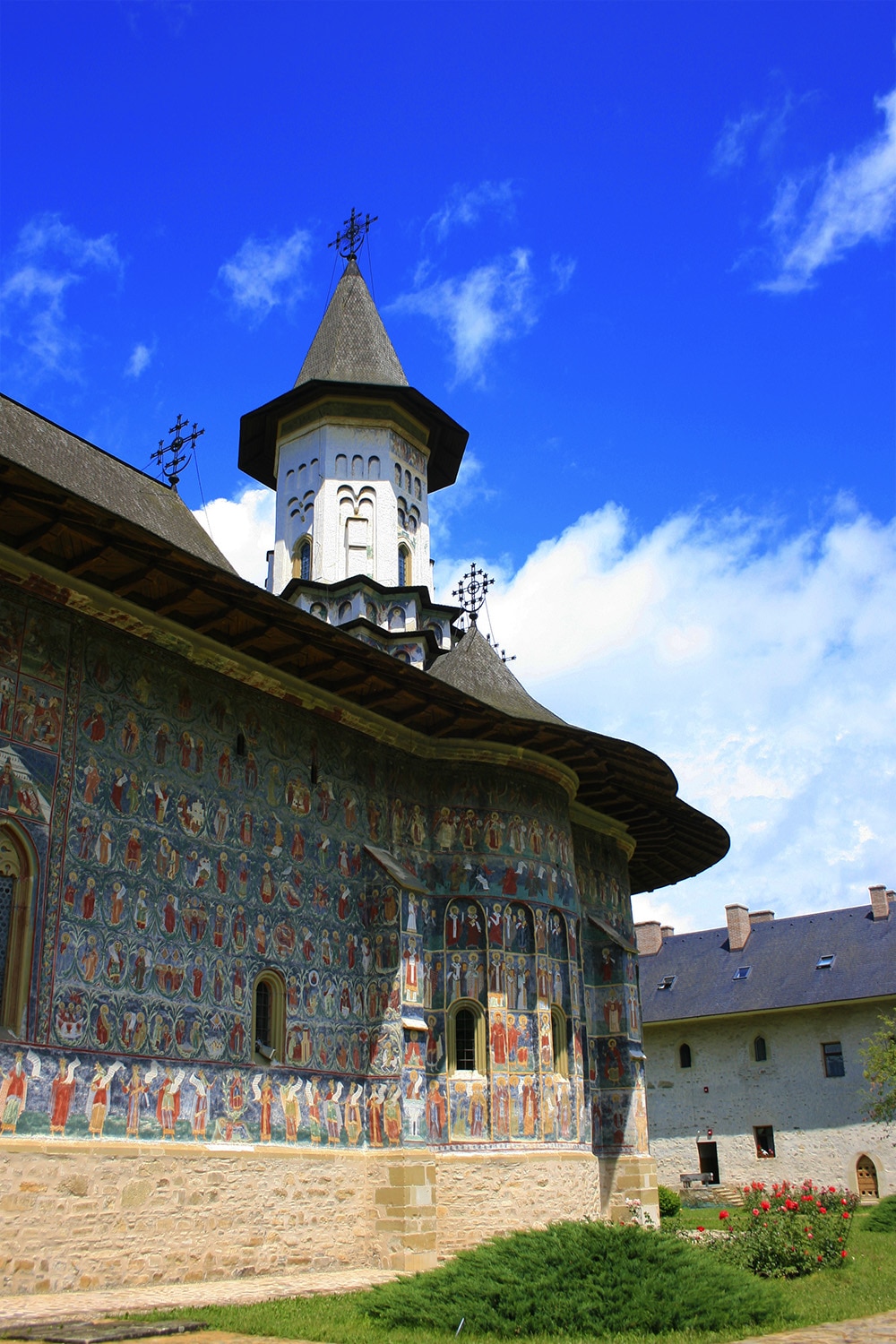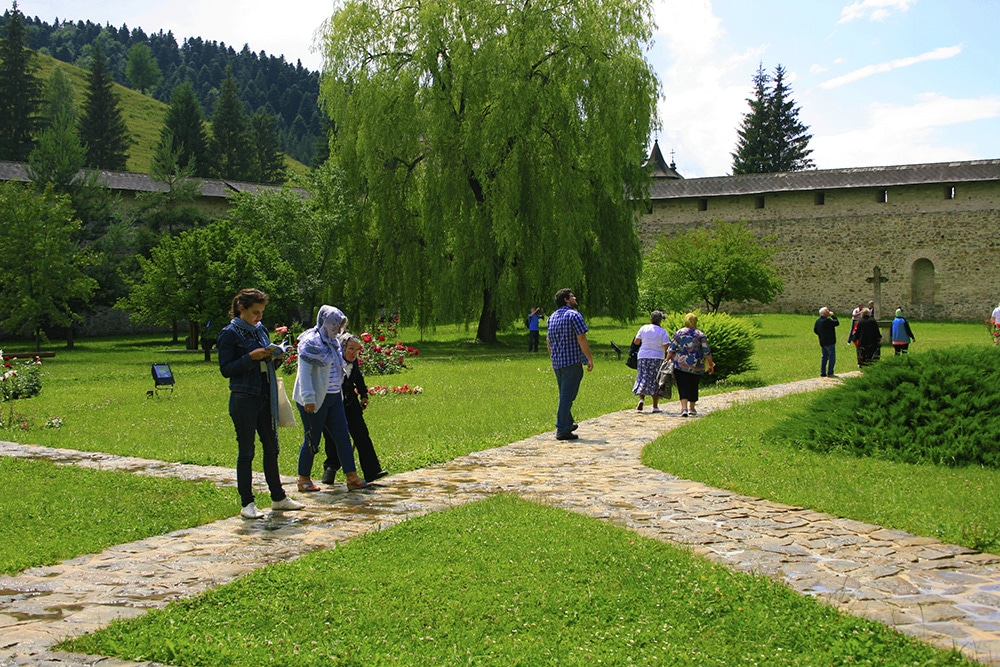We left behind the quiet land of Mestecăniș and we headed to Moldovița Monastery. Things were lively there: few booths with local merchandise, some parked cars and people fussing around.
We passed the 5 meters high and 1,5 meters thick wall, that surrounded the monastery, to find right in the center a building that was more or less an architectural jewel.
This monastery it is placed between two becks: Moldovița and Ciumârna. The first church of the monastery that was built under the reign of Alexandru cel Bun (1402–1410) collapsed because of a landfall at the end of XV-th century. It was built again (and it is the one that we can see today), on a flatter land, near the old site and it was given the same titular saint as the old one, “Buna Vestire” (“Lady Day”), by the ruler Petru Rareș in 1532. At the same time with the construction of this church, the defensive walls and the towers were erected there and in 1610-1612 a chapel was built, used as a dwelling place and school for clerks and miniaturists (here were copied and embellished many books that are now at Dragomirna Monastery).
Regarding the traditional architecture, the church has a cruciform plan, five rooms separated by walls that have doors on the center, each room having separate vaulted ceilings but it brings some new architectural elements that have been used only during the reign of Petru Rareș: the opened church porch (the second of this kind after Humor Monsatery because it is usually closed), the bench that surrounds the church and the hidden place (a room on top of graves room where they kept all the tresures in case of ottoman attack) and as an artistic element, the exterior painting (this is something unique because usually the churches are not painted on the outside). It can be noticed that each monastery has a dominant colour, Moldovița having a red-brown colour (see the blue of Voroneț and red-ochre of Humor).
If you stay to observe the pictures you will notice both the religious scenes and historical ones (“The Siege of Constantinople”) and also traditional motifs (landscapes, vegetation, costumes etc.)
I took long walks through the courtyard admiring the beauty of this place and observing the people that enliven the atmosphere. When we headed to our car it started to rain but I couldn’t resist not to take a visit to the booth of a man that sell embroidered Romanian blouses. I fell in love at the first sight with one that I immediately purchased and wore with so much love in Greece.
Wearing my new blouse, we headed to Sucevița Monastery. On the road we stopped at a nice boarding house (Vila Lulu) where I ate the most delicious boletus dish ever. And we waited for the rain to stop a little.
When we arrived at Sucevița it was sunny and warm. Here we found some more liveliness. There were but a few pretty large groups that were visiting the Monastery at the same time with us.
This one was built in 1584 with the help of Movilă family and it is placed on Sucevița river valley. The church has the patron “Învierea Domnului” (“The Resurrection of the Lord”). From the architectural point of view, the plan is composed by nave, narthex, altar, opened church porch and the crypt. The architectural ensemble is surrounded with a 6 meters high and 3 meter thick wall with towers on the corners and at the entrance and a watch road.
From the artistic point of view, the dominant colour is green. The composition “Arborele lui Ieseu” (“The Ieseu’s tree”) can be found at all the monasteries with exterior painting in the North of Moldavia, and here you can see it on the façade facing South. On the Eastern façade there’s a large composition, “Cinul” (“Churchdom”), which is divided in seven horizontal parts and it symbolizes the hierarchy of the heaven and earth. Among all the monasteries, the painting here was the best one preserved and it is the last built monastery with exterior painting (this practice was used during the Ștefan cel Mare and Petru Rares reigns).
At the end couldn’t help myself not to take another stroll in the garden. I would have stayed longer, especially since is was so sunny, but we still had a long journey ahead of us and less than a half of the day to complete the itinerary.
Love, Andreea
[to be continued]
[read first part here]

